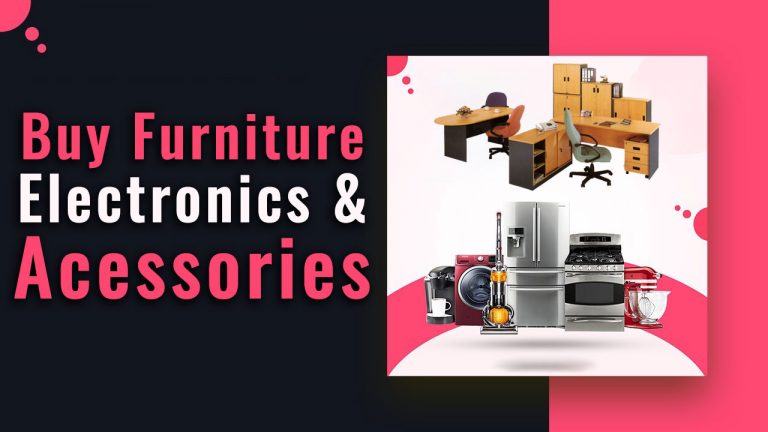The office products retailer was measuring customer service using metrics— such as the cleanliness of bathrooms—that didn’t drive sales. Its new president is trying to fix that by retraining the staff and transforming the company.
When I became the leader of Office Depot’s retail stores in the United States, in 2010, the first thing I tried to do was figure out the meaning of a puzzling set of facts. Our sales had been declining, and although that’s not unusual in a weak economy, they had declined faster than the sales of our competitors and of retailers in general. At the same time, the customer service scores our third-party mystery-shopper service was reporting were going through the roof. This didn’t make any sense. How could it be that we were delivering phenomenal service to our customers, yet they weren’t buying anything?
To understand these contradictory data points, I decided to do some mystery shopping myself. I didn’t wear a suit. I didn’t wear a blue Office Depot shirt like the ones employees wear in all our U.S. stores. Instead I wore a faded pair of jeans, a T-shirt, and a baseball cap. I didn’t tell anyone I was coming to visit, and in most cases I didn’t let anyone know afterward that I’d been in the store. What I wanted was to experience Office Depot in the same way our customers do. Over the next several weeks I visited 70 stores in 15 or more states.
At each location I followed the same routine. First I pulled into the parking lot and just watched customers go in and out for a few minutes. When I went into the store, I’d spend 20 to 30 minutes observing what was going on. I’d talk to customers, in the aisles and as they were leaving the store. Some of the most interesting conversations took place when I followed people out who weren’t carrying shopping bags and asked them why they hadn’t bought anything. Some of them gave me an earful.
I could tell you a lot of stories about the things I saw, but two scenes stand out in my mind. In one store I watched an employee argue with a customer about whether or not we carried a calculator that her son needed for first grade. An employee arguing with a customer—it was unbelievable.
At another store, I parked and saw an associate leaning up against the brick facade smoking a cigarette. Meanwhile, customers were walking out without any bags. This employee did nothing—he just watched them leave empty-handed. At that point I had a tough decision to make: Should I blow my cover and alert the store manager, or should I stay silent? I sat in the car a few minutes, thinking it over. Finally I decided, I just can’t let this go.
I went into the store and looked at the stanchion that stands at the front of every location, displaying the name of the manager and his or her picture. Guess who the store manager was? Yes—the guy smoking outside the store. So I went up to him and introduced myself, and we had a good long talk. He was ashamed of his behavior—and he was sweating during the conversation. He promised he’d do a better job of taking care of customers, and I promised to keep in touch. Even today we exchange e‑mails every month to discuss his performance.
Get In, Get Ou
During most of my visits, though, I managed to stay incognito, and I came away having learned a big lesson: Our mystery-shopping scores were correct. You know what was flawed? Our scoring system. We were asking the wrong questions. We were asking, Are the floors clean? Are the shelves full of inventory? Are the store windows clean? Have the bathrooms been cleaned recently? Think about that for a moment: How often do you go to the bathroom while shopping for office supplies? It turns out that customers don’t really care about any of that. Those factors don’t drive purchases, and that’s why our sales were declining. It would be easy to blame our associates for ignoring shoppers, but under the system we’d built, they weren’t doing anything wrong. They were doing exactly what we’d asked them to do—working to keep stores clean and well stocked instead of building relationships with customers.
My conversations with customers gave me three insights into how we should transform our business to become more competitive: One, we had to reduce the size of our stores. They were too large and too difficult to shop in. Two, we had to dramatically improve the in-store experience for our customers. That meant retraining our associates to stop focusing on the things our existing system had incentivized them to do and focus on customers instead. Three, we had to look beyond office products to provide other services our customers wanted. They wanted copying, printing, and shipping. They wanted help installing software and fixing computers. We needed to expand our offerings if we were to remain relevant to our customers.
Talking directly with dozens of customers also reminded me of a cold, hard fact: They have many choices. Office products are a $300 billion industry, and the top three players—Staples, Office Depot, and OfficeMax—account for less than 10% of that. Approximately 65% of our customers are small and midsize businesses, and buying office supplies doesn’t add value to what they do. It’s a chore. They want to get in and get out—they care about convenience above all else.
Less Stocking, More Selling
On the basis of that feedback, we began to transform our business. It’s probably one of the most challenging journeys I’ve taken in my life. We started by designating two test stores, one in Chicago and one in south Florida.
Many of the changes we made were done behind the scenes, in parts of the business that customers don’t see. We altered the way our supply chain operates so that we could accept deliveries from vendors even when no one was in the store to sign in the merchandise. We began separating stock onto U-boats (the narrow stocking carts we use in aisles) assigned to different parts of the store and delivering the U-boats to an optimal spot—marked with an X on the floor—to minimize the labor required by associates to stock shelves. We also divided the store into zones and began having the same associates stock the same sections repeatedly. Becoming expert in one area of the store allowed them to restock faster, reducing labor.
Many people think that in order to improve service, you need to hire more frontline workers. But in fact, by finding ways to reduce the time employees spend on functions such as stocking shelves, we’ve been able to repurpose their time for selling to customers. Each of our stores employs 18 people on average; by finding ways to work smarter, we’ve been able to save 80 hours a week—the equivalent of hiring two full-time salespeople but at no added cost.
Once our associates had more time to serve customers, we needed to ensure that they knew how. We simplified our sales process from five steps to three—it’s now called ARC, for “Ask, recommend, and close”—and trained them to implement it. We taught them to ask customers open-ended questions. Our research indicated that in certain departments—such as furniture—sales go up by more than 100% when associates with really good product knowledge are assigned to those zones. So in addition to sales training, we invested in product training.
When a retailer delivers poor service, many people are quick to blame the employees. In my experience, it’s more complicated than that. We have 22,500 associates in our retail organization; one of the things we did as part of our change program was to have every one of them take a test built on the Myers-Briggs Type Indicator to help us understand their skills, behaviors, and attributes as they relate to serving customers. An interesting thing we found was that we’d been hiring people who were most comfortable with their backs, rather than their bellies, to the aisle. Roughly one in five associates preferred performing tasks on merchandise over interacting with customers. A challenge we faced in rolling out these initiatives was how to help those workers become comfortable with the ARC culture—or, frankly, to help them find other meaningful jobs within the company if they couldn’t acquire the right selling skills.
Smaller Is Better
You can’t drive changes like this overnight. Our business has been around since 1986, and that’s a long time for employees and customers to establish expectations and behaviors. These changes won’t be completed in the next month or the next quarter—maybe not even in the next year. In addition to the two “lab” stores in Chicago and Florida, we’ve rolled out 30 pilot stores, and we’re seeing encouraging evidence of an improvement in sales. We’re also hearing positive anecdotal feedback from customers and associates. (There has been a dramatic improvement at the store where I caught the manager smoking outside: Today it is one of the top performers in the company.) We hope that by the end of 2011, 325 of our stores will be utilizing the new system.
We’ve also made progress in shrinking the size of our stores. Today they average 24,000 square feet. We’ve already had success with new stores of 15,000 to 17,000 square feet. We are introducing a small-format store that’s about 5,000 square feet. It carries only 5,000 SKUs—compared with 8,500 SKUs in our traditional stores—but because they’re our most popular products, they represent 93% of what we sell in a traditional store. This format will allow us to be in downtown markets like New York City or in remote markets where we wouldn’t consider putting a large-format store.
As we work to make these changes, I still try to visit our stores as frequently as possible. It’s really the only way you can know how your business is doing. You have to see how customers are being treated, and you can’t rely on reports or scores or hearsay—you have to experience it yourself. If you think your company is doing well with customer service, ask yourself, Am I really sure? Do I know what the customer experiences?
What I pay attention to most of all is how many people are leaving the store without a shopping bag. I’d be glad if people came to our stores to browse, but this is not a browsing industry—people are shopping with a very specific purpose in mind. If they don’t make a purchase, something has gone wrong. If we can reduce this “balk rate” by just 10%, it will have a meaningful impact on both our top-line revenue and our margins.
You also have to make sure you’re measuring things that really matter to customers. I can tell you from firsthand experience what happens when you measure the wrong things. I always try to remember that we need our customers more than they need us—and we’d better act like it.



